The Sir David Lyndsay Society
The Sir David Lyndsay Society was established in 2007 as a friendly group of those interested in exchanging ideas and information about Lyndsay’s writing, life, and times.
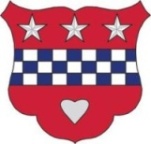
There is no subscription required for membership; all interested are welcome to join.
An email circulation list for members’ use is maintained by Dr Sarah Carpenter, University of Edinburgh. To join the Society and be added to the list, please contact Dr Carpenter (or any other member of the current committee):
email Dr Janet Hadley Williams
A regularly updated bibliography of work on Lyndsay is available for members on the circulation site.
Current Lyndsay

During 2017 the Sir David Lyndsay Society conducted a survey of current Lyndsay activity among its members. The survey aimed to provide an overview of research being undertaken on Lyndsay, of how far he and his work are being taught to a new generation, and of the range of interests in Lyndsay across our membership. The returns testified to the breadth of interest: from research into Lyndsay’s writing, to understanding of his role in heraldry; from teaching Lyndsay’s work at many different levels, to exploration of genealogy.
Staging and Representing the Scottish Renaissance Court
Sir David Lyndsay’s dramatic work was the centre of a two-year, interdisciplinary research project funded by the AHRC. ‘Staging the Scottish Renaissance Court’ mounted a production of Ane Satyre of the Thrie Estaitis as part of a wider investigation of the Scottish Stewart court and of modern images of national identity and the Scottish past.
The central aim of the project was the first ever full-length production of The Thrie Estaitis since 1554, on the Peel at Linlithgow, in June 2013. There were also performances in the Great Halls in Linlithgow Palace and Stirling Castle of the ‘lost’ interlude version of the play, first performed at Linlithgow in 1540.
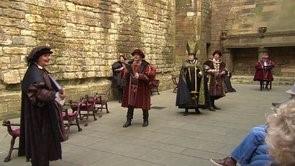
The project, led by Professor Greg Walker and Dr Eleanor Rycroft of the University of Edinburgh, and Professor Thomas Betteridge of Brunel University, brought together academics from across the UK with archaeologists and historical interpreters from Historic Scotland, and professional theatre and film-makers.
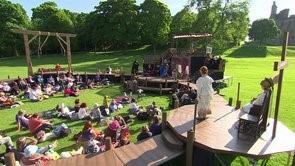
Lyndsay was brought to the heart of Scottish political consciousness in the run-up to the independence referendum in September 2014. A conference on the 2013 production culminated in a panel discussion of Ane Satyre of the Thrie Estaitis at the Scottish Parliament, Holyrood, in June 2014. The Opening Address was given by the Culture Secretary, Fiona Hyslop.
The First Minister, Alex Salmond commented on Lyndsay’s play as: ‘an extraordinarily bold piece of theatre … [which] … raises profound questions about the nature of monarchy, the role of the popular voice in Scottish politics’.
Following the concluding conference and panel discussion, the Sir David Lyndsay Society presented Greg Walker with the inaugural President’s Award in recognition of his exceptional contribution to Lyndsay studies.
The project website, including a full video of the productions, is available at the following link: http://stagingthescottishcourt.brunel.ac.uk/
Lyndsay Paving Stone
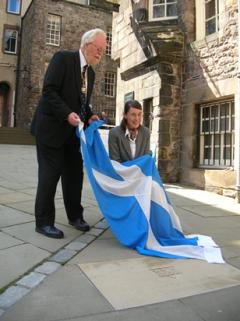
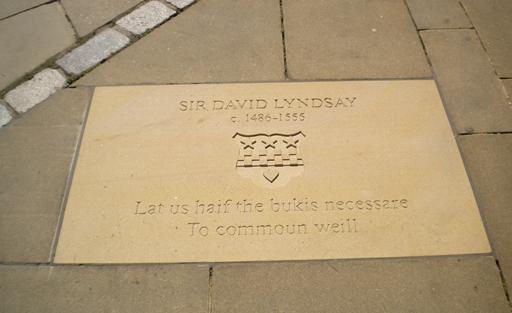
We are delighted to announce the success of the Society’s appeal to sponsor a paving stone to commemorate Sir David Lyndsay at Makars’ Court, Edinburgh. Grateful thanks for all the generous support and donations from members and beyond, from individuals and societies from across the world in the fields of literature, heraldry and history. A list of donors with some brief information about Lyndsay for visitors will be lodged in the Writers’ Museum.
The stone was dedicated on 14 July 2011. Councillor Steve Cardownie introduced the ceremony for the City of Edinburgh, the President of the Sir David Lyndsay Society, Janet Hadley Williams, celebrated Lyndsay’s life and work, and the Lord Lyon, King of Arms, David Sellar removed the saltire from the stone in memory of his most distinguished predecessor.
Sir David’s stone joins an eminent company of Scottish writers honoured in Makars’ Court at the Writers’ Museum, including John Barbour, Robert Henryson, William Dunbar, Robert Fergusson, Neil Gunn, Hugh McDiarmid, Tom Scott, Violet Jacob, John Buchan, J. K. Annand and Dorothy Dunnett.
The stone carries Lyndsay’s name with birth and death dates, his coat of arms and a quotation chosen from one of his most popular works, Ane Dialog betwix Experience and ane Courteour:
Lat us haif the bukis necessare To commoun weill.
(Let us have the books necessary for our common good.)
The quotation sums up Lyndsay’s commitment to accessible education, literature, social and religious reform. See below for a fuller extract from the poem.
Ane Diolog betwix Experience and ane Courteour
| Quhowbeit that divers devote cunnyng clerkis |
| In Latyne toung hes wryttin syndrie bukis, |
| Our unlernit knawis lytill of thare werkis |
| More than thay do the ravyng of the rukis. |
| Quharefore, to colyearis, cairtaris and to cukis, |
| To Jok and Thome my ryme sall be diractit, |
| With cunnyng men quhowbeit it wylbe lactit. |
| . . . |
| Prudent Sanct Paull doith mak narratioun |
| Tuycheyng the divers leid of every land, |
| Sayand thare bene more edificatioun |
| In fyve wordis that folk doith understand, |
| Nor to pronunce of wordis ten thousand |
| In strange langage, sine wait not quhat it menis. |
| I thynk sic pattryng is not worth two prenis. |
| . . . |
| Bot lat us haif the bukis necessare |
| To commoun weill and our salvatioun, |
| Justlye translatit in our toung vulgare. |
| (ll.545–680) |

